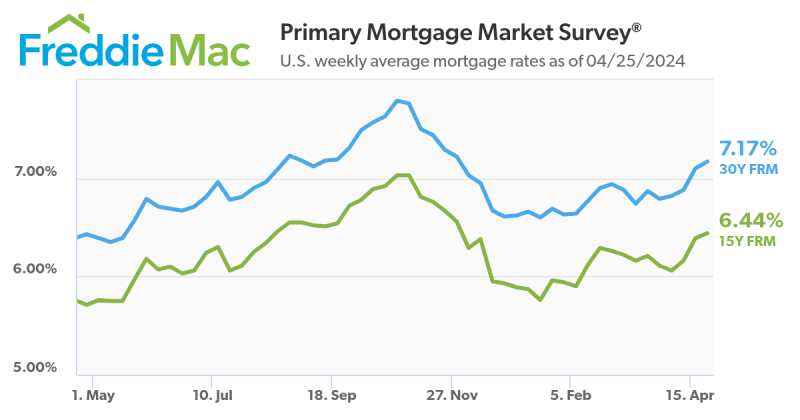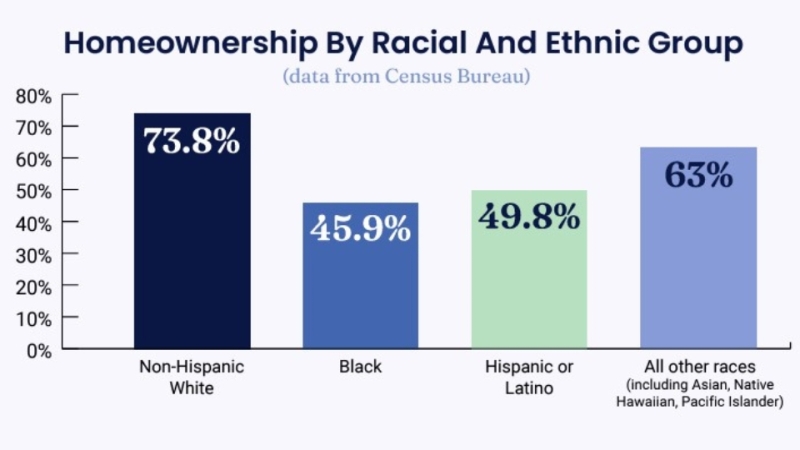Advertisement
Industry Prevails in Illinois Courts
Home Ownership and Equity Protection Act Amendments May Chill Sub-Prime Lending in Effort to Reduce Predatory LoansThomas NotoPredatory Lending, Legislation, Regulation, HOEPA
In Dec. 2000, faced with increasing pressure to address
predatory lending concerns through revisions to Regulation Z, the
Federal Reserve Board (Board) proposed revisions to Regulation Z
that would increase the number of loans covered by Home Ownership
and Equity Protection Act requirements and add certain prohibitions
in connection with such loans. A summary of the proposed provisions
was provided in Kirkpatrick & Lockharts Alert entitled The
Federal Reserve Board Proposes Amendments to Regulation Z to Curb
Alleged Predatory Lending Practice, dated Jan. 11, 2001. The Board
recently finalized the proposed revisions. Compliance will be
mandatory on Oct. 1.
The board adopted the regulation as proposed except for two
notable exceptions. First, the proposed regulation would have
lowered the annual percentage rate threshold for both first and
subordinate lien loans from 10 percentage points to eight
percentage points above the yield on Treasury securities having
comparable maturities. The final rule adopts this change only with
respect to first lien loans. Second, the Board did not adopt an
anti-flipping proposal that would have prohibited lenders from
refinancing low cost loans within five years of origination of such
loans. After consideration of the comments received, the Board
staff determined that the compliance burden far outweighed any
perceived benefit. Below is a brief summary of notable amendments
adopted in the final regulation:
++Expansion of coverageLowers the APR trigger from 10 percentage
points above the yield on Treasury securities having comparable
periods of maturity for first lien loans and includes the amount of
credit insurance premiums in the points and fees trigger.
++Expanded Prohibitions on HOEPA LoansAdds the following
requirements for HOEPA loans: i. A prohibition, within the first 12
months of originating a HOEPA loan, on a creditor from refinancing
the loan or any other HOEPA loan held by the consumer into another
HOEPA loan. This provision applies equally to assignees who hold or
service the loan; ii. A limitation on the inclusion of payable on
demand or call provisions in HOEPA loans; and iii. A prohibition on
improperly characterizing loans as open end lines of credit in
order to evade the reach of HOEPA. ++Enhancement of
DisclosuresChanges the required disclosures to alert borrowers, in
advance of loan closing, of the total amount borrowed, which is
essentially the note amount, and include disclosure, if applicable,
of any credit insurance premiums paid prior to closing. ++Ability
to RepayProvides that failure to routinely document and certify
borrowers ability to repay their loans will create the presumption
that the lender is engaging in a pattern and practice of making
HOEPA loans based on homeowners equity in violation of HOEPAs
provisions.
I. Background In 1995, in response to evidence of allegedly
abusive lending practices involving mortgage loans, Congress
enacted HOEPA. HOEPA is principally implemented by Section 32 of
Regulation Z1 and covers loans that are secured by a consumers
principal dwelling where either (i) the annual percentage rate at
consummation will exceed, by more than 10 percentage points, the
yield on Treasury securities having comparable periods of maturity;
or (ii) the total points and fees payable by the consumer at or
before closing will exceed the greater of eight percent of the
total loan amount or $465.2 Purchase money loans, reverse mortgages
and open end lines of credit are not covered by HOEPA.
Congress granted the Board authority to amend the APR trigger
and the charges included in the points and fees trigger. With
respect to the APR trigger, the Board may increase or decrease the
threshold to an amount that is not less than eight percentage
points nor more than 12 percentage points above the yield on
Treasury securities having comparable maturities. The Board may
take such action provide the amendment is consistent with the
consumer protection provisions found in the Riegle Community
Development and Regulatory Improvement Act of 1994 and is warranted
by the need for credit. With respect to the points and fees
trigger, the Board has no authority to adjust the statutorily
prescribed thresholds; however, the Board may include within the
calculation of points and fees such other charges as the Board
determines to be appropriate.3
The final regulation reflects the Boards efforts to take
advantage of the authority granted under HOEPA to extend the reach
of the law to include a greater number of loans. The Board believes
that such exercise of its powers is necessary to further Noels
purposes of maintaining and strengthening consumer home ownership
and equity protection.
II. Revisions A. Expansion of Coverage 1. APR Trigger As noted
above, the Truth in Lending Act (TILA) permits the Board to adjust
the APR trigger by two percentage points in either direction. The
Board may effect such a change no more often than once every two
years. The final rule lowers the APR threshold by two percentage
points to eight percentage points above the yield on Treasury
securities having comparable periods of maturity for first-lien
loans. The Board adopted this provision, rather than lowering the
threshold for all mortgage loans, essentially for two reason.
First, the Board believes that perceived predatory lending abuses
occur more often in connection with first-lien loans. Note that
this conclusion is based, in a large part, on anecdotal evidence as
the board does not have statistical data to such effect. Second,
the Board believes that the current threshold already incorporates
a significant proportion of subordinate-lien loans, as such loans
tend to have higher interest rates, and that a change to the
threshold for subordinate-lien loans is not warranted at this
time.
2. Points and Fees Trigger In addition to the APR trigger,
mortgage loans are covered by HOEPA if the points and fees payable
by the consumer at or before loan closing exceed the greater of
eight percent of the total loan amount or $465 (adjusted amount for
2001). Points and fees include all finance charges (aside from
interest) broker fees, and certain closing costs in some
instances.
The Board has authority to expand the components of the points
and fees determination and proposed to include within the
calculation the costs associated with premiums for optional credit
insurance (such as credit life, accident, health or loss-of-income
insurance) and similar products paid by the consumer at or before
closing. Commenters on this proposal were sharply divided. Those
who supported the proposal viewed it as a good compromise to an
outright ban on optional credit insurance where the borrower pays
the premium prior to closing. Those who opposed the proposal,
however, raised a variety of concerns. Some questioned the Boards
authority to include the cost of credit insurance in the
calculation of points and fees. Others warned that the proposal
would effectively cause all loans that include the cost of credit
insurance to trigger HOEPA coverage. These opponents noted that
such a result will have the undesirable effect of causing lenders
to cease offering certain types of credit insurance even where such
insurance is beneficial to cash-poor consumers.
Ultimately, the Board decided to include in the calculation of
points and fees the cost of credit insurance that is paid in cash
prior to loan closing or financed into the loan (whether the amount
represents the entire premium or an initial payment) for purposes
of determining HOEPA coverage. Even if the effect of the amendment
is to cause all loans that contain such premiums to fall within
HOEPAs reach, the Board believes that the amendment is necessary
and consistent with the purposes of HOEPA. HOEPA was specifically
designed to assist borrowers in high-cost mortgage transactions to
understand the cost of the transaction. Anecdotal evidence
suggested to the Board the unscrupulous lenders may pack the costs
of credit insurance into the loan in an effort to increase the cost
of the loan while avoiding the disclosure requirements under HOEPA.
The Board believes that the amendment will have the advantageous
effect of improving consumer awareness of the costs associated with
credit insurance where the borrower pays the premium in cash prior
to closing or the lender finances the cost into the loan.
B. Prohibition of Specific Acts or Practices 1. Limitations on
Refinancing HOEPA Loans Within 12-Month Period In the proposed
regulation, the Board identified loan flipping as one of the more
egregious practices in which predatory lenders engage. Flipping is
generally viewed as the practice of frequently refinancing
home-secured loans to generate additional fee income even though
the refinancings may not be in the borrowers interest. To address
this concern, the proposed regulation included language that would
restrict the ability of lenders and borrowers to refinance HOEPA
loans early in the loan transaction.
The Board adopted this proposal with some modifications and
clarifications. According to the final rule, within the first 12
months of originating a HOEPA loan, a creditor is prohibited from
refinancing the loan or any other HOPEA loan held by the consumer
into another HOEPA loan unless the refinancing is in the borrowers
interest. Note that the prohibition in the final rule continues to
apply to creditors who originated the loan irrespective of whether
such creditors continue to hold the loan. Also, the final rule
provides that assignees are under the same restriction as the
original creditor while holding or even servicing a covered loan.
Further, the prohibition in the final rule extends to a creditors
affiliates in the event that the creditor engages in a pattern or
practice of arranging loans with its affiliates in an effort to
evade the prohibition. The Board believes that such a provision
with respect to assignees is necessary since, in some instances,
the assignee is the true creditor funding the loan.1 The
prohibition is designed to prevent lenders from evading the
restriction through an immediate assignment of the loan.4
As proposed, the determination of whether a benefit to the
borrower existed required a lender to undertake a review of the
totality of the circumstances. Although the Board acknowledges that
the totality of the circumstances test raises the specter of an
extremely subjective undertaking on the part of the lender, the
final rule adopts the test as proposed. Notwithstanding this, in an
effort to provide some guidance to lenders, the final rule sets
forth a safe harbor. In the event that a loan is needed for a bona
fide personal financial emergency, then the loan presumptively
provides a benefit to the borrower. Note that this standard is the
current standard for waiver of the three-day rescission period that
is already incorporated into Regulation Z. One example of a bona
fide personal financial emergency is the imminent sale of a
borrowers home at foreclosure. As a practical matter, however,
creditors are normally quite cautious in invoking this exception to
rescission, and a similar posture might be expected here.
2. Limitations on Refinancings of Certain Low-Rate Loans The
Boards proposed regulation included an extremely problematic
revision that would have prohibitedduring the first five years of
the loanthe refinancing of a zero interest or low-cost loan into a
higher rate loan unless the refinancing was in the interest of the
borrower. As proposed, the provision would have covered all
low-cost loans, not just those refinanced into HOEPA loans. For
purposes of the proposed amendment, a low-cost loan was defined as
a fixed rate loan that carries a rate that is two percentage points
or more below the yield on Treasury securities with comparable
maturity, or an ARM loan where the current rate is at least two
percentage points below the index or formula used by the creditor
for making rate adjustments.
Based in large part on the comments received, the Board staff
recommended that the Board not adopt the proposed prohibition. As
noted in our Jan. 11 Alert, if adopted, the prohibition would have
been extraordinarily burdensome for creditors refinancing ARM
loans. IN order to determine if the transaction qualified as a
low-cost loan, a lender would have been forced to obtain a copy of
the old note from the borrower, compute the fully-indexed rate, and
compare it to the current rate before it could determine whether it
could refinance the loan. The preamble to the final rule
acknowledges that the compliance burden associated with the
proposed prohibition far outweighed any potential benefits, and,
thus, was not incorporated into the final rule.
3. Prohibition of Due on Demand and Call Provisions The final
rule adopts the Boards proposal that payable on demand or call
provisions be prohibited in HOEPA loans unless the clauses are
exercised in connection with default, impairment of security of
fraud by the borrower. For example, a lender may not terminate and
accelerate a loan in the event a consumer erroneously sends payment
to the wrong location. Unlike the prohibition on balloon payments
that currently exists under HOEPA, the restriction on due demand or
call provisions is not limited to the first five years of the loan.
These provisions are virtually identical to those presently in
effect for open-end home equity lines of credit.
4. Prevention of Evasion of HOEPAs Provisions The Board hopes to
limit evasion of HOEPAs provisions by prohibiting lenders from
improperly classifying transactions as open-end when there is no
reasonable expectation of repeated draws. Thus, any loan documented
as open-end credit, but where the terms of such loan demonstrate
that it does not meet the definition for open-end credit, is
subject to the rules relating to closed-end credit, including the
HOEPA rules where the loan triggers the APR or points and fees
threshold. In may ways, this is merely a more specific application
of the spurious open-end credit analysis that has already been an
issue under TILA; a loan is only open-end credit if a creditor
reasonably expects repeated transactions under the plan.
C. Enhancement of Disclosures The final regulation adds to the
list of required early disclosures under Regulation Z the
disclosure of the total amount borrowed. The total amount borrowed
essentially is the amount reflected on the face of the note. A
disclosure made under this provision is accurate, provided it
contains an amount that varies no more than $100 from the actual
amount borrowed.
The Board believes that, by receiving this disclosure, borrowers
will be alerted well in advance of loan closing that the actual
amount of the loan may be substantially higher than the amount
requested once points, fees and insurance have been financed into
the loan. The final rule also requires that lenders expressly
indicate whether the total amount includes any optional single
premium credit insurance purchased by the borrowera requirement
that the Board hopes will deter creditors from packing insurance
premiums into the cost of the loan without the knowledge of the
borrower.
The final rule further clarifies that Section 226.32(c) requires
creditors to disclose the amount of a balloon payment. Generally,
Section 226.32 requires creditors to disclose the amount of a
regular monthly or other periodic payment, including any balloon
payment. The final rule merely moves language to such effect from
the Commentary to the text of the regulation. As such, the
following model disclosure language was added to Appendix H-16: At
the end of your loan, you will still owe us $[balloon amount].
D. Ability to Repay Section 129(h) of TILA prohibits creditors
from engaging in asset-based lending through a pattern of practice
of extending HOEPA loans to consumers on the sole basis of the
equity in the consumers homes rather than on the consumers ability
to repay their loans. The Board adopted the amendments to the
regulation as proposed, which essentially required lenders to
document and verify their consideration of the borrowers ability to
repay HOEPA loans. Failure to keep this necessary documentation
creates a rebuttable presumption that lenders are originating loans
without regard to the applicants ability to repay the loan. The
final rule also adopts certain language in the Commentary that
requires lenders originating ARM loans subject to HOEPA to
underwrite such loans based on the fully-indexed rate (as opposed
to the introductory rate or the rate at the first adjustment). Such
language requires lenders to take into account the maximum possible
payment increases in the shortest possible time when underwriting
loans. Arguably, this requirement could significantly restrict
certain borrowers ability to qualify for a loan.
III. Conclusion Even though the Board rejected demands from
consumer groups to dramatically revise HOEPA coverage tests, an
increased proportion of mortgage loans will now fall within the
scope of the law. The Boards intention certainly is to provide a
benefit to consumers by increasing the number of loans that will be
accompanied by HOEPAs required disclosures and increased
protection. Unfortunately, the regulation also may have the
unintended effect of harming the very consumers that the Board
hopes will benefit by leaving them with fewer financing
options.
Footnotes 1. 1 12 C.F.R. § 226.32. 2. This figure, originally
$400, is adjusted annually based on the Consumer Price Index and is
$480 for 2002. 3. 15 U.S.C. § 1602. 4. While the Board used
the phrase true creditor in discussing this change, we have been
advised by the Boards staff that it did not intend to alter the
rule that the creditor is the entity to which a loan is initially
payable. The creditor, not an assignee, has disclosure
responsibilities.
This article was reprinted with the permission of Kirkpatrick
& Lockhart LLP. For more information, call (202) 778-9000, fax
(202) 778-9100 or visit www.kl.com.
About the author





